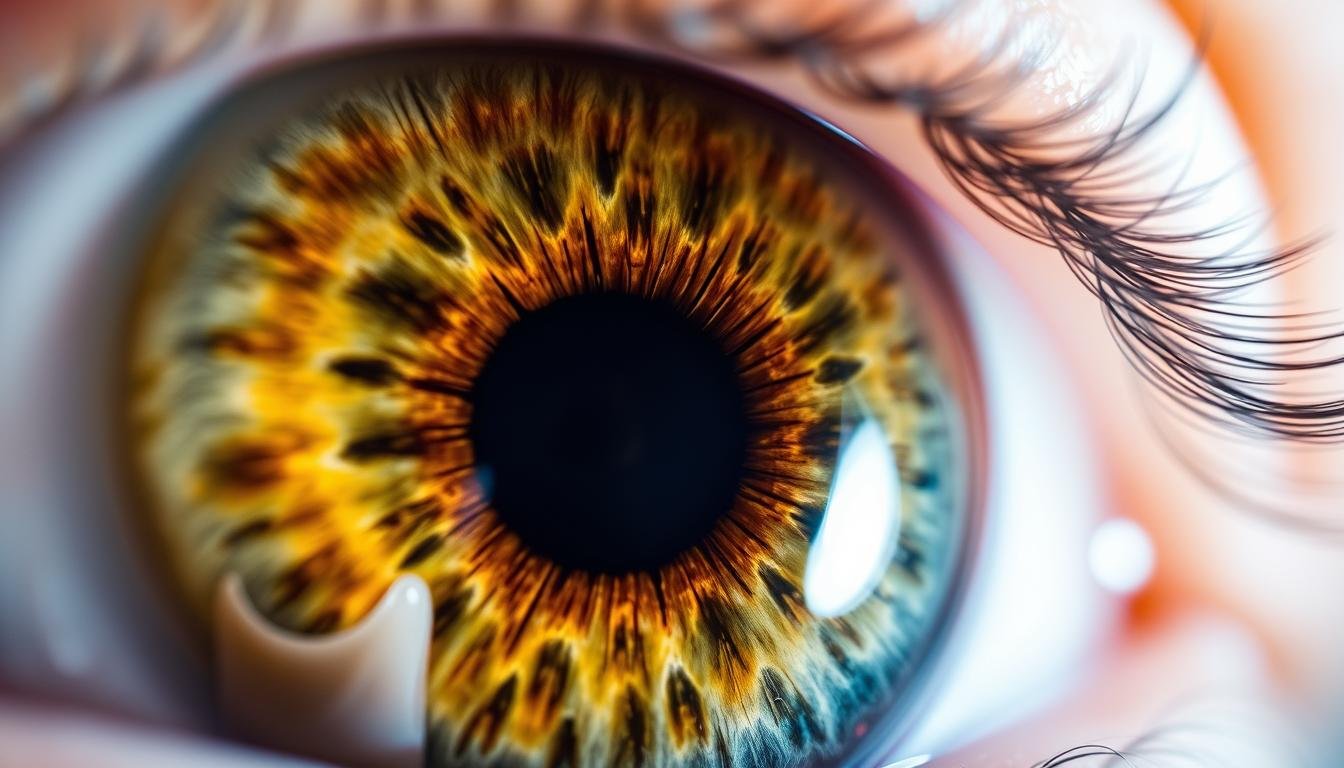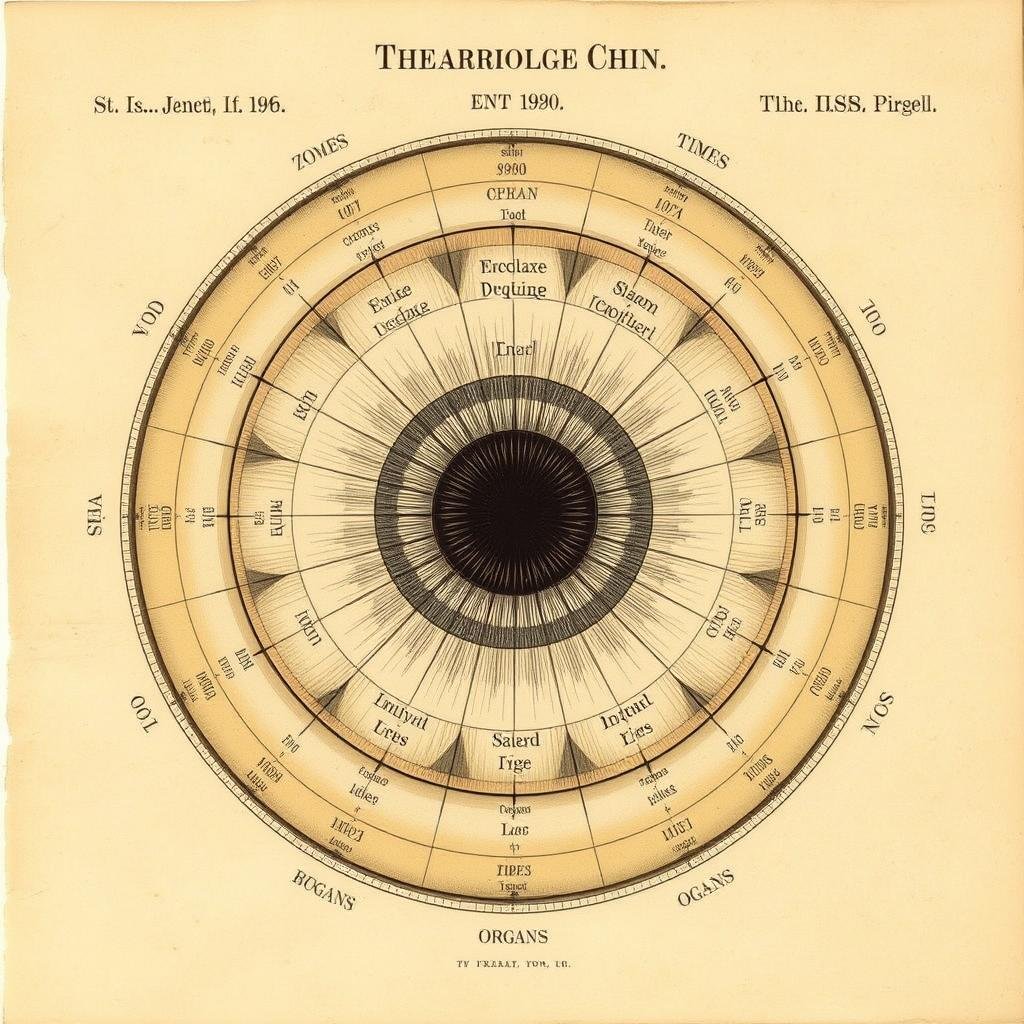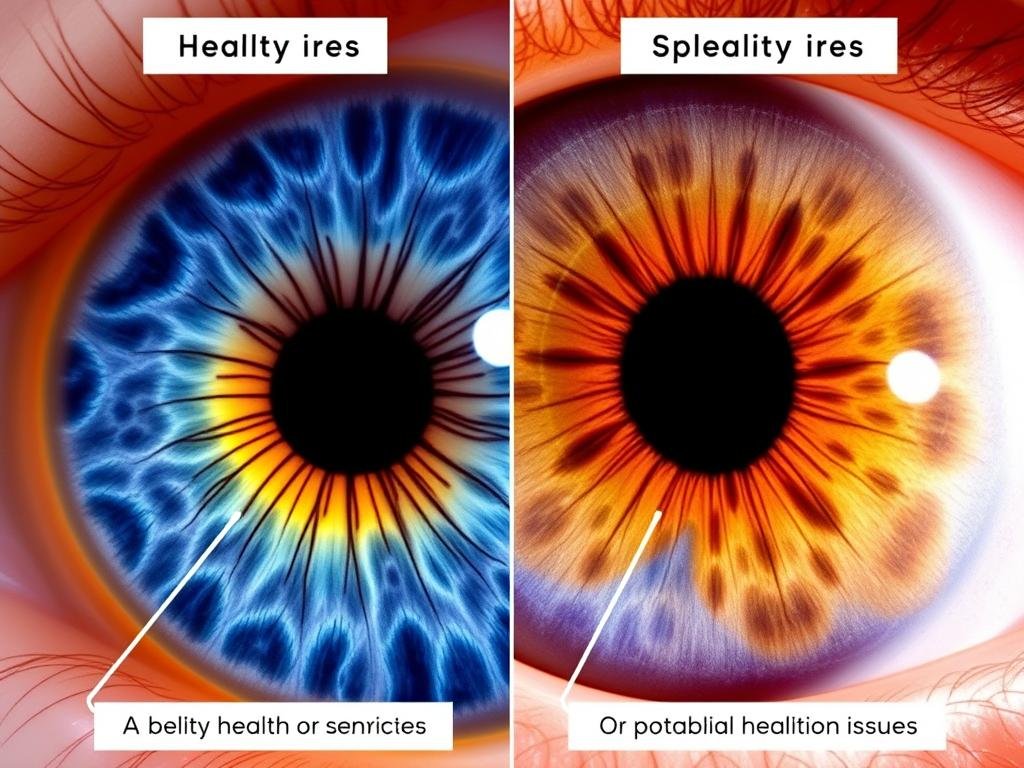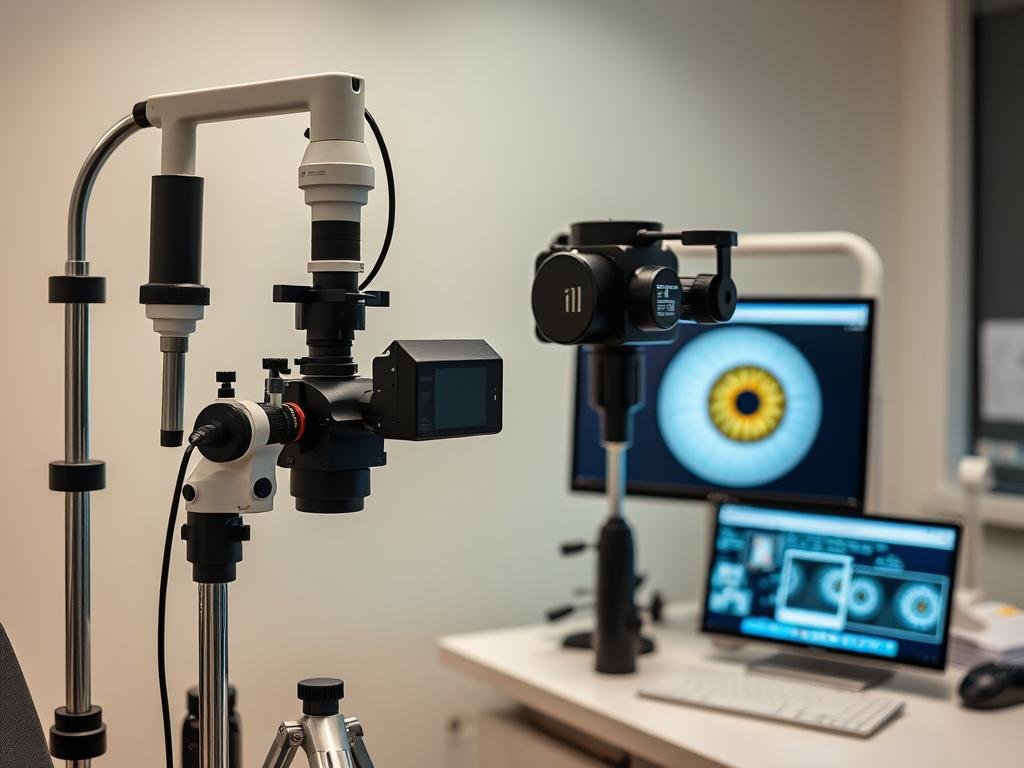Your eyes may reveal more about your health than you realize. Diagnóstico da IRIS de iridologia is an alternative health practice that examines patterns, colors, and other characteristics in the iris of your eye to provide information about your overall health. This comprehensive guide explores how iridologists use the colored part of your eye as a diagnostic tool, the history behind this practice, and what science says about its effectiveness.O que é o diagnóstico de iridologia da íris e como funciona?

Diagnóstico da IRIS de iridologia is the study of the iris (the colored part of the eye) to detect potential health issues, nutritional needs, and constitutional strengths or weaknesses. Iridologists believe that each area of the iris corresponds to different organs and systems within the body, creating a map that can reveal valuable health information.
The practice is based on the premise that the iris contains a multitude of nerve endings connected to the brain via the optic nerve, making it a potential window into the body’s condition. When body tissues become inflamed or damaged, iridologists believe these changes may be reflected in the iris through alterations in color, structure, or markings.
The Basic Principles of Iridology Iris Diagnosis
Iridology operates on several key principles:
- The iris contains detailed information about the state and functioning of all body tissues
- Different zones of the iris correspond to specific organs and body systems
- The left iris reflects the left side of the body, while the right iris reflects the right side
- Changes in iris color, structure, and markings may indicate changes in tissue health
- Constitutional strengths and weaknesses can be identified through iris analysis
During an iris examination, a trained iridologist uses specialized equipment such as magnifying lenses, cameras, or slit-lamp microscopes to carefully examine the intricate details of your iris. They then compare their observations with standardized iridology charts to identify potential health concerns.
The History and Evolution of Iridology
The roots of iridology trace back thousands of years, with evidence suggesting early forms were practiced in ancient Egypt, China, and India. However, modern Iridology Iris Diagnosis as we know it today began taking shape in the 19th century.
The Founding Fathers of Modern Iridology
Dr. Ignatz von Peczely, a Hungarian physician, is often credited as the founder of modern iridology. As the story goes, as a child, von Peczely accidentally broke an owl’s leg and noticed a dark mark appear in the owl’s iris. After the leg healed, he observed the mark had changed, leading him to hypothesize a connection between iris markings and physical health.
In 1881, von Peczely published his first book on iridology, which included the first comprehensive iris chart mapping body regions to specific areas of the iris. Around the same time, Swedish homeopath Nils Liljequist independently developed similar theories after observing changes in his own iris following medical treatments.

Original iridology chart developed by Dr. Ignatz von Peczely in the 1880s
Evolution into Modern Practice
Throughout the 20th century, iridology continued to develop with significant contributions from practitioners like Dr. Bernard Jensen in the United States and Josef Deck in Germany. They refined the iris charts and established more systematic approaches to iris analysis.
Today, Iridology Iris Diagnosis is practiced worldwide, with various schools of thought and methodologies. Modern practitioners often use digital imaging technology to capture high-resolution images of the iris, allowing for more detailed analysis and documentation of changes over time.
The Methodology of Iridology Iris Diagnosis
Understanding how iridologists conduct their examinations helps clarify what to expect during an iris reading and how they interpret what they see.
O processo de exame
Uma sessão de iridologia típica segue estas etapas:
- Initial consultation to discuss health history and concerns
- Examination of both irises using specialized equipment (magnifying lenses, cameras, or slit-lamp microscopes)
- Documentation of iris characteristics through photography or detailed notes
- Analysis of findings using standardized iridology charts
- Discussion of observations and potential health implications
- Recommendations for lifestyle changes, nutritional adjustments, or further medical evaluation if needed

Iridologist examining a patient’s iris using specialized equipment
Interpreting the Iris Map
Iridologistas use detailed charts that divide the iris into zones corresponding to different body systems and organs. The right iris is generally associated with the right side of the body, and the left iris with the left side. The interpretation focuses on several key aspects:
Iris Colors and Their Meanings
The base color of your iris (blue, brown, mixed, etc.) is believed to indicate your constitutional type and genetic predispositions. For example:
- Blue iris: Lymphatic constitution, potentially more sensitive digestive and respiratory systems
- Brown iris: Hematogenic constitution, potentially stronger circulatory and metabolic systems
- Mixed iris: Biliary constitution, potentially more reactive liver and gallbladder functions
Markings and Their Significance
Various markings in the iris may indicate different health conditions:
- Radial lines: Potential nerve stress or irritation
- Rings or circles: Possible circulation or nervous system issues
- Spots or flecks: Potential accumulation of toxins or inflammation
- Color changes: Possible acute or chronic conditions in corresponding organs

Modern iridology chart showing various iris markings and their potential health implications
Potential Benefits of Iridology Iris Diagnosis
Proponents of iridology suggest several potential benefits to this approach to health assessment:
Advantages of Iridology
- Non-invasive examination method with no pain or discomfort
- Potential early detection of health tendencies before symptoms appear
- Holistic approach that considers the whole body and its interconnected systems
- May identify constitutional strengths and weaknesses to guide preventative care
- Can complement other diagnostic methods and health assessments
Limitações a serem consideradas
- Not scientifically validated by major medical organizations
- Cannot diagnose specific diseases with certainty
- Interpretation varies between practitioners and schools of thought
- Should not replace conventional medical diagnosis and treatment
- Results may be subjective and difficult to verify independently
Health Conditions Potentially Identified Through Iridology
Practitioners suggest that Iridology Iris Diagnosis may help identify tendencies toward various health conditions, including:
Sistema digestivo
- Inflammation in the digestive tract
- Poor nutrient absorption
- Liver and gallbladder function issues
Sistema Circulatório
- Circulation problems
- Tendências da pressão arterial
- Cardiovascular stress indicators
Other Systems
- Lymphatic congestion
- Nervous system stress
- Desequilíbrios hormonais

Comparison of healthy iris patterns (left) versus iris showing potential health issues (right)
Scientific Perspective on Iridology Iris Diagnosis
While iridology has many dedicated practitioners and followers worldwide, it’s important to understand how the scientific and medical communities view this practice.
Pesquisa e Estudos
Several scientific studies have examined the validity of iridology as a diagnostic tool:
“Iridologia had low sensitivity and specificity, and the likelihood ratio of a positive test was too low to be of any clinical relevance. The validity of iridology as a diagnostic tool is not supported by scientific evaluations.”
— Excerpt from a systematic review published in Forsch Komplementärmed (1999)
A study published in the Journal of Alternative and Complementary Medicine found that iridologists were unable to consistently identify patients with specific diseases through iris examination alone. Similarly, research in the Archives of Ophthalmology concluded that iridology did not demonstrate clinical utility as a diagnostic tool.
Perspectiva da Comunidade Médica
Most conventional medical practitioners and organizations do not endorse iridology as a diagnostic method due to:
- Lack of consistent scientific evidence supporting its effectiveness
- Absence of a clear physiological mechanism explaining how internal organ conditions would manifest in iris patterns
- Concerns about potential delays in seeking appropriate medical care if relying solely on iridology
Nota importante: While exploring iridology, it’s essential to maintain regular check-ups with your primary healthcare provider and not delay conventional medical treatment for any health concerns. Iridology should be viewed as a complementary approach rather than a replacement for evidence-based medical care.

Healthcare professional discussing iridology findings with a patient
Getting Started with Iridology
If you’re interested in exploring what Iridology Iris Diagnosis might reveal about your health, here are some practical steps to get started:
Finding a Qualified Iridologist
When seeking an iridology practitioner, consider these factors:
- Credentials: Look for certification from recognized iridology organizations
- Experience: Ask about their training and years of practice
- Approach: Inquire about their methodology and what to expect during a session
- Reviews: Check testimonials or reviews from previous clients
- Complementary Skills: Many iridologists also have backgrounds in nutrition, naturopathy, or other health fields

Consultation with a certified iridologist to discuss iris analysis findings
What to Expect During Your First Iridology Session
A typical first appointment with an iridologist may include:
- Health history discussion and review of your current concerns
- Examination of both irises using specialized equipment
- Documentation through photographs or digital imaging
- Analysis and explanation of findings
- Recommendations based on observations
- Follow-up plan if appropriate
Questions to Ask Your Iridologist
Prepare for your appointment by considering these questions:
- What can you tell about my constitutional strengths and weaknesses?
- Are there any areas of concern you can identify in my iris?
- What lifestyle or nutritional changes might benefit my specific iris patterns?
- How often should I have my irises examined?
- How do you recommend integrating iridology with my conventional healthcare?

Modern digital iris photography equipment used in professional iridology practice
Complementary Self-Care Practices
While professional Iridology Iris Diagnosis provides the most comprehensive analysis, there are complementary self-care practices that align with iridology principles:
Nutrição & Hydration
Many iridologists emphasize the importance of proper nutrition and hydration for overall health. Consider:
- Drinking adequate water daily
- Consuming a variety of colorful fruits and vegetables
- Reducing processed foods and refined sugars
- Supporting organ systems identified as potential areas of weakness
Gerenciamento de estresse
Stress often appears in the iris as tension rings. Practices that may help include:
- Regular meditation or mindfulness practice
- Exercícios de respiração profunda
- Adequate sleep and rest
- Tempo na natureza
- Gentle movement like yoga or tai chi
Eye Health
Maintaining good eye health supports clear iris readings and overall wellbeing:
- Regular eye exercises to reduce strain
- Protecting eyes from excessive screen time
- Using proper lighting when reading
- Wearing sunglasses to protect from UV damage
- Regular eye check-ups with an optometrist

Self-care practices that complement iridology principles
Conclusion: Integrating Iridology Into Your Health Journey
Iridology Iris Diagnosis offers a unique perspective on health assessment by examining the intricate patterns and characteristics of your iris. While scientific validation remains limited, many people find value in the holistic insights this practice can provide.
The most balanced approach is to view iridology as one tool among many in your health journey. Consider these key takeaways:
- Iridology may offer complementary insights but should not replace conventional medical care
- The practice can potentially identify constitutional tendencies and areas that may benefit from preventative care
- Working with qualified practitioners ensures the most accurate and helpful interpretation
- Combining iridology with evidence-based healthcare creates a more comprehensive approach to wellbeing
Whether you’re curious about what your eyes might reveal or seeking to expand your health awareness, Iridology Iris Diagnosis offers a fascinating window into the connection between your iris patterns and overall health. By approaching this practice with both an open mind and healthy skepticism, you can determine what role it might play in your personal wellness journey.

Integrating iridology insights into a comprehensive health approach
Pronto para explorar o que sua íris revela?
Schedule a professional iris reading with a certified iridologist to discover potential insights about your health.
Book Your Iridology Session Today













